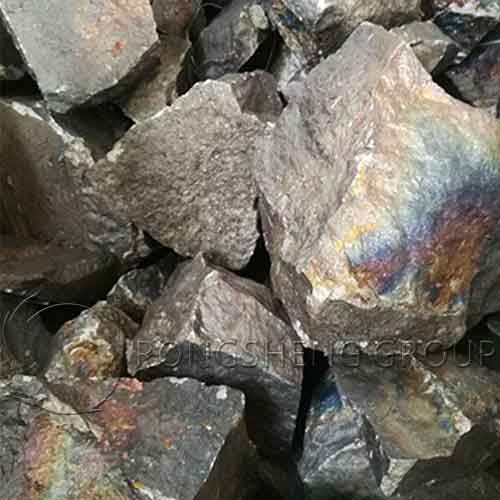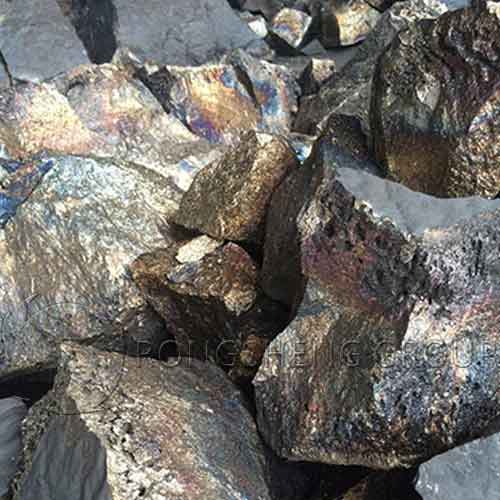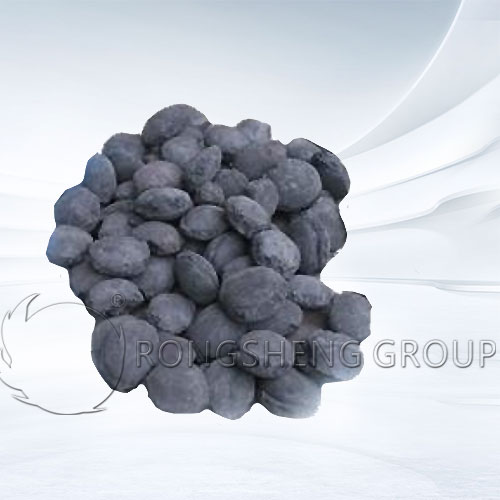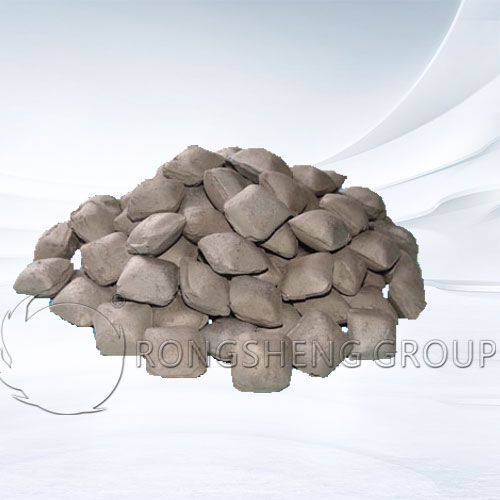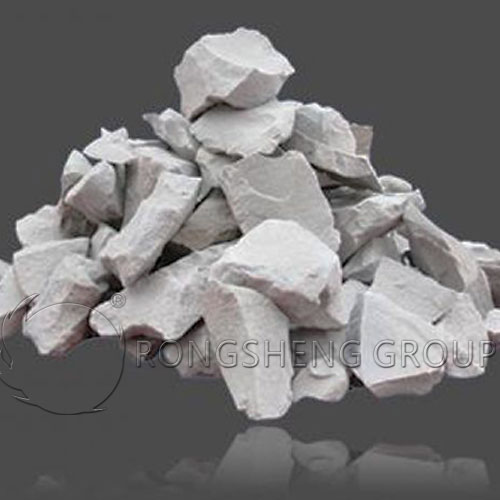
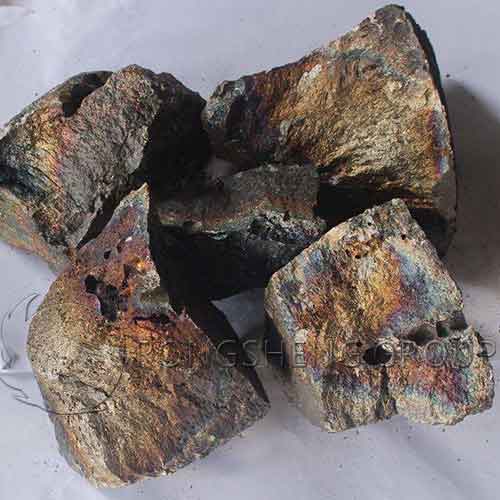
Ferro Manganese Suppliers
Ferromanganese is a ferroalloy composed of manganese and irons. Its main classifications are high-carbon ferromanganese (containing 7% carbon), medium-carbon ferromanganese (containing 1.0-1.5% carbon), low-carbon ferromanganese (containing 0.5% carbon), etc.
We're Here to Help!
Easy ways to get the answers you need.
Whechat/Whatsapp: +86 185 3831 2977
Email: sales@hy-refractory.com
Description
Inquiry
Related
Description
What is Ferro Manganese?
Ferromanganese is a ferro alloy composed of manganese and iron. Its main classifications are: high carbon ferro manganese (containing 7% carbon), medium-carbon ferromanganese (containing 1.0-1.5% carbon), low carbon ferro manganese (containing 0.5% carbon), etc. According to different smelting methods, it can be divided into electric furnace ferromanganese and blast furnace ferromanganese.Description of Ferromanganese Grades:
Taking “FeMn68C7.0” for example:
Fe — Indicates that high carbon ferromanganese is an iron alloy product containing iron elements;
Mn68 — the main element and percentage of high carbon ferromanganese;
C7.0 — Carbon content and its percent content.
The particle size range of ferromanganese: natural block (20-150mm); processing block (10-100mm); powder; can also be processed according to customer requirements.
Ferromanganese packaging: generally packed in tons of bags.
Ferro Manganese Manufacturers
In steelmaking, ferromanganese is used as a deoxidizer and alloy additive, and is the most used ferroalloy. Manganese ore for smelting ferromanganese generally requires 30-40% of manganese, the ratio of manganese-iron is greater than 7, and the ratio of phosphorus and manganese is less than 0.003. Before smelting, the manganese carbonate ore must first be roasted, and the fine ore needs to be sintered to form agglomerates. Ores with high iron and phosphorus content can only be used together. Or through selective reduction, manganese-rich slag with low iron and low phosphorus can be obtained. During smelting, coke is used as a reducing agent, and some plants also use lean coal or anthracite. The auxiliary raw material is mainly lime, and silica is generally added when smelting silicon manganese alloy.
Carbon ferromanganese, in the world, the general standard is 75 to 80% manganese. In order to adapt to the raw material conditions with low manganese ore grade, China stipulates a brand with lower manganese content (electric furnace ferromanganese contains more than 65% manganese and blast furnace ferromanganese contains more than 50% manganese). In the past, smelting carbon ferromanganese mainly used blast furnaces. With the development of the power industry, the number of manufacturers using electric furnaces for ferromanganese smelting has gradually increased. Western Europe and China mainly use blast furnaces; Norway and Japan all use electric furnaces; the new iron ferromanganese factories in the Soviet Union, Australia, Brazil and other countries also use electric furnaces.
Smelting Method - Ferromanganese Production
Blast furnace smelting
A blast furnace is used to smelt ferromanganese alloy, generally a blast furnace below 1000 cubic meters is used, and the equipment and production process are generally the same as the iron-making blast furnace. In the process of manganese ore falling from the top of the furnace, high-priced manganese oxide (MnO2, Mn2O3, Mn3O4) is gradually reduced to MnO by CO as the temperature increases. However, MnO can only be directly reduced to metal by carbon at high temperature, so smelting ferromanganese requires a higher furnace temperature. For this reason, blast furnaces for smelting ferromanganese use a higher coke ratio (around 1600 kg/ton) and air temperature (above 1000°C). To reduce manganese loss, the slag should maintain a high basicity (CaO/SiO2 greater than 1.3). Due to the high coke ratio and low indirect reduction rate, the gas yield and CO content of the ferromanganese blast furnace are higher than those of the iron blast furnace, and the furnace top temperature is also higher (above 350℃). Oxygen-enriched blast can increase the temperature of the hearth, reduce the coke ratio, and increase the output. Moreover, due to the reduction of gas volume, the furnace top temperature can be lowered, which has a significant improvement effect on the smelting of ferromanganese.
Electric furnace smelting
Reduction smelting of ferromanganese. There are flux method (also known as low manganese slag method) and no flux method (high manganese slag method). The principle of the flux method is the same as that of blast furnace smelting, except that the coke used for heating is replaced by electrical energy. By adding lime, a high basicity slag (CaO/SiO2 is 1.3 to 1.6) is formed to reduce the loss of manganese. Smelting without flux method, without adding lime, forming low iron and low phosphorus manganese rich slag with low alkalinity (CaO/SiO2 less than 1.0) and high manganese content. This method has a small amount of slag, which can reduce power consumption, and because the slag temperature is low, it can reduce the evaporation loss of manganese. At the same time, the by-product manganese-rich slag (containing 25-40% manganese) can be used as a raw material for smelting manganese-silicon alloys. This can achieve a higher comprehensive recovery rate of manganese (more than 90%). Most modern industrial production uses the flux-free method to smelt carbon ferromanganese, and it is jointly produced with the smelting of manganese-silicon alloy and medium and low carbon ferromanganese.
Electric furnace refining
Medium and low carbon ferromanganese is generally desiliconized and refined with 1500-6000 kVA electric furnace, using manganese silicon, manganese-rich ore and lime as raw materials.
The reaction is: MnSi+2MnO+2CaO─→3Mn+2CaO·SiO2.
The use of high alkalinity slag can reduce the manganese content of the furnace slag and reduce the loss of manganese caused by the abandoned slag. In the joint production, lower slag basicity (CaO/SiO2 less than 1.3) is used, and the resulting slag with higher manganese content (20-30%) can be used for smelting manganese silicon alloys. Preheating the charge or loading liquid manganese-silicon alloy can help shorten the smelting time and reduce power consumption. Refined power consumption is generally around 1000 kWh. The medium and low carbon ferromanganese is also produced by the heat exchange method, through the heat exchange between the liquid manganese silicon alloy and the manganese ore and lime melt.
Oxygen blowing refining
Blowing liquid carbon ferromanganese or manganese silicon alloy with pure oxygen can produce medium and low carbon ferromanganese. After many years of experimental research, this method entered industrial scale production in 1976.
Technical situation-ferro manganese production process
Modern large-scale ferromanganese reduction electric furnaces have a capacity of 40,000 to 75,000 kVA, and are generally fixed and closed. The smelting power consumption of the flux method is generally 2500 to 3500 kWh/ton, and the power consumption of the fluxless method is 2000 to 3000 kWh/ton.
The manganese-silicon alloy is smelted in a closed or semi-closed reduction furnace. Generally, manganese ore with high silica content and low phosphorus content is used, or silica is added as a raw material. Manganese-rich slag with low phosphorus content and high silica content is a good raw material for smelting high silica ferro silico manganese alloys. The power consumption of smelting is generally about 3500~5000kw·h/ton. The raw materials into the furnace are pretreated first, including granulation, preheating, prereduction and powder sintering. These factors have significantly improved the operation and technical and economic indicators of the electric furnace.
Ferro Manganese Uses
Ferromanganese is widely used in steel industry, foundry industry and other industrial production.
1. Steel industry: Ferromanganese is an essential deoxidizer and desulfurizer in the steelmaking industry. Good steel needs to be deoxidized and desulfurized during smelting. The use of a deoxidizer will greatly increase its cost, so ferromanganese is an inexpensive deoxidizer. Desulfurization refers to the removal of harmful substances such as sulfur in steel. Ferromanganese can achieve the purpose of desulfurization, effectively reduce the content of harmful elements in steel, and improve the quality of steel.
In the steelmaking industry, each ton of steel produced consumes approximately 3 to 5 kg of 75% ferromanganese.
2. Foundry industry: ferromanganese is added to cast iron, which can be used as inoculant and spheroidizing agent for ductile iron. And it can prevent the formation of carbides, promote the precipitation of graphite and greatly shorten the spheroidization time. It can also greatly reduce the form of impurities in molten iron, improve the quality of cast iron, and improve the performance of cast iron. And reduce the clogging of the smelting furnace nozzle, effectively prolong the service life of the smelting furnace.
3. Other industries: high-carbon ferromanganese or manganese alloys are used as reducing agents in the production of low-carbon ferroalloys in the ferroalloy industry. Ferromanganese powder can be used as a suspended phase in the beneficiation industry and as a coating for the electrode in the electrode manufacturing industry. High manganese ferromanganese can be used to prepare semiconductor pure manganese in the electrical industry, and can be used to manufacture manganese ketone in the chemical industry.
Inquiry
If you want to learn more about our Refractory Products, please feel free to fill the inquiry form below.
We will get in touch with you ASAP!
Related products
Copyright @ Zengzhou Rongsheng Kiln Refractory Co., Ltd. All Rights Reserved | Site Map | ExportBureau profile

